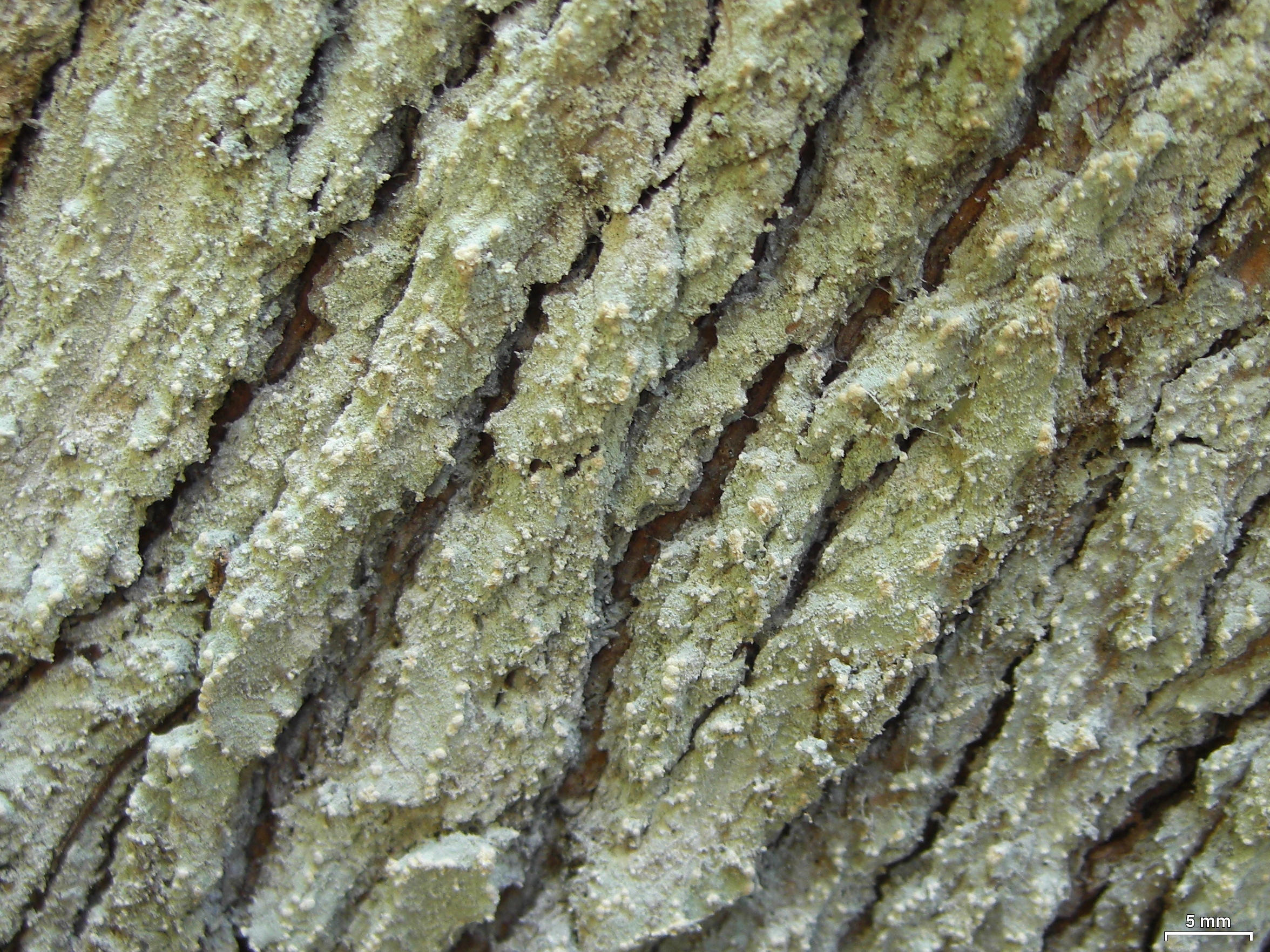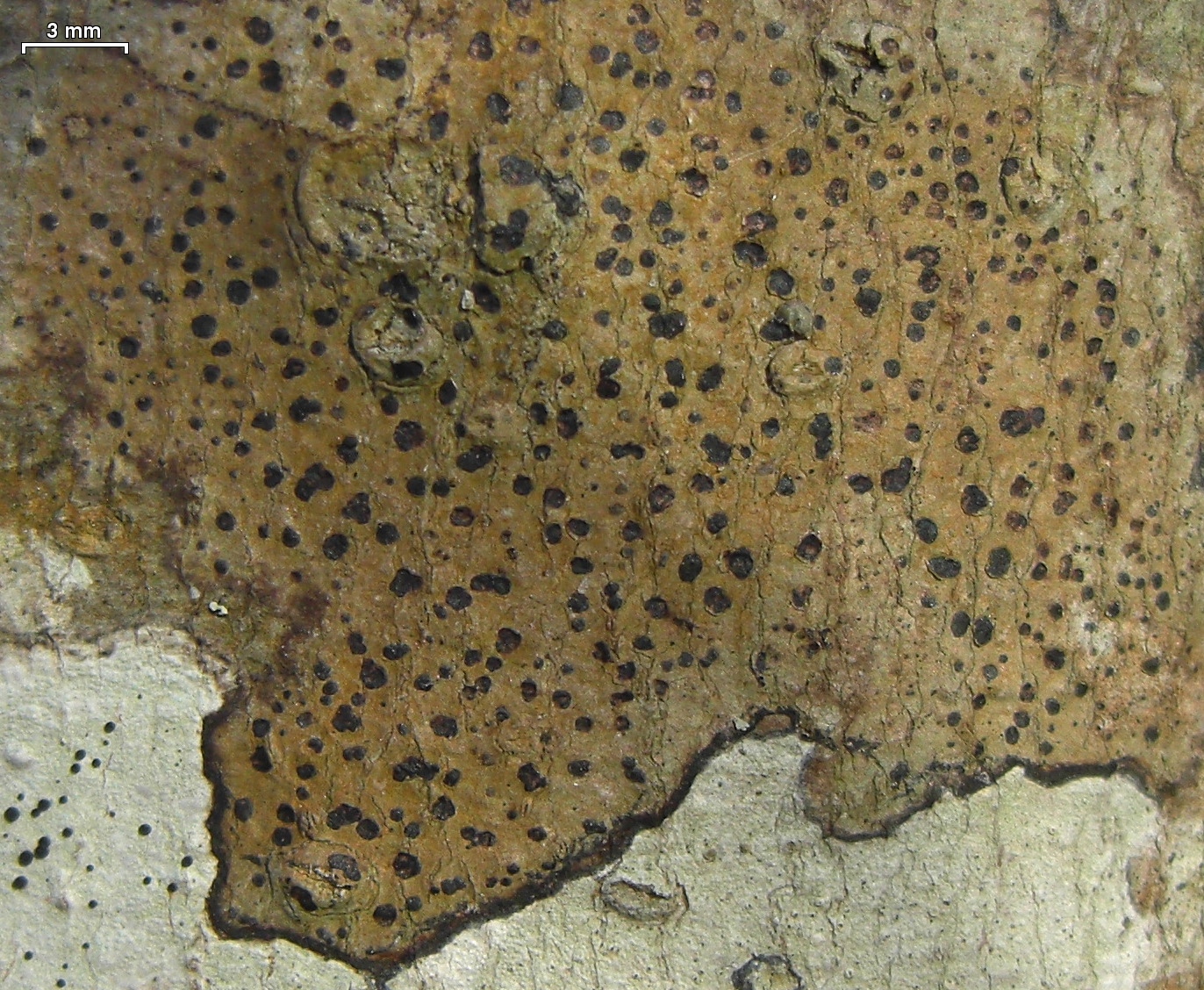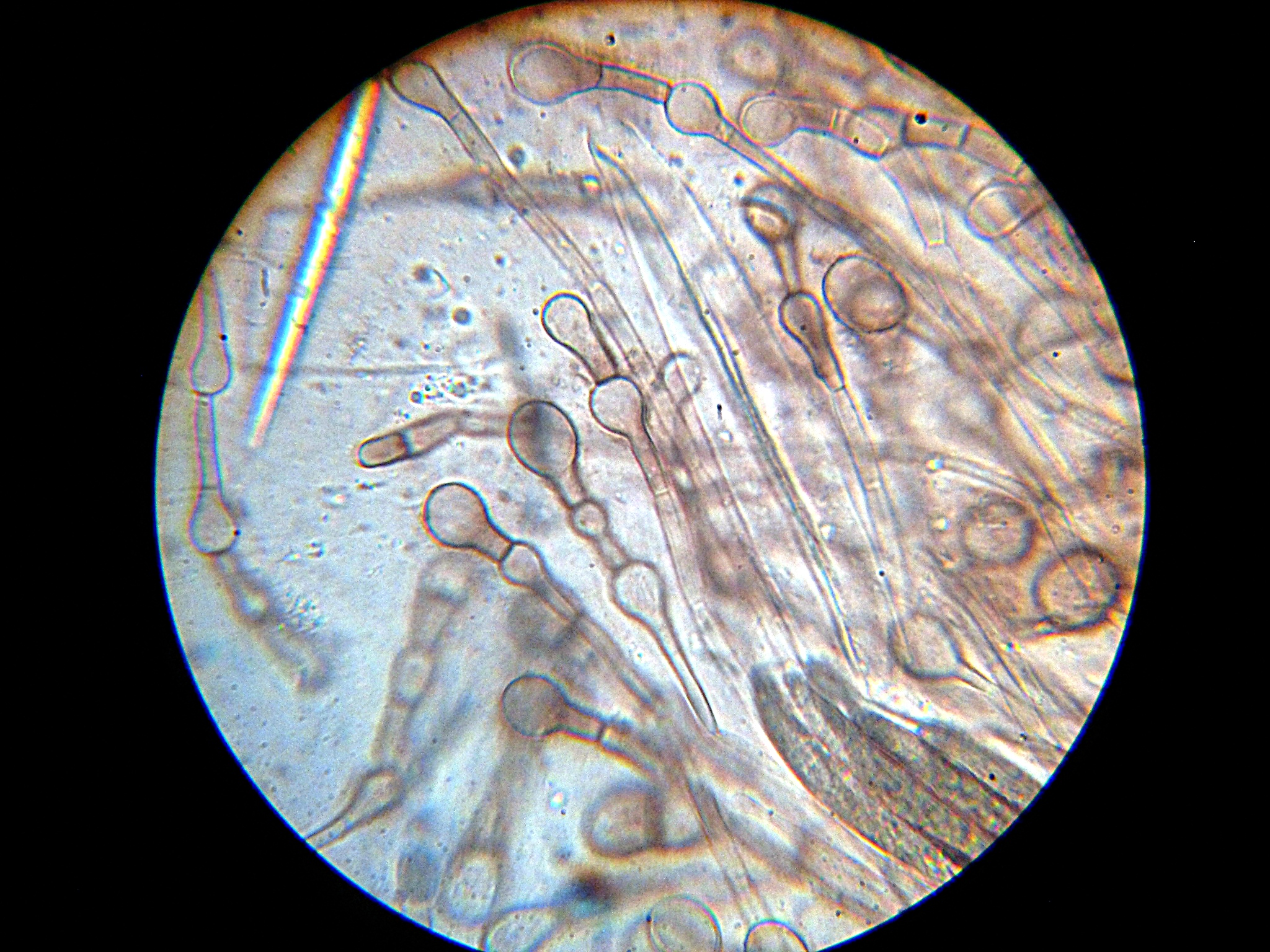|
Arthoniaceae
The Arthoniaceae are a family (biology), family of lichenized, Lichenicolous fungus, lichenicolous and saprobic fungi in the order Arthoniales. The Arthoniaceae is the largest family of Arthoniales, with around 800 species. Most species in Arthoniaceae belong in ''Arthonia'' which is the largest genus with 500 species. The second and third largest genus is ''Arthothelium'' with 80 species, and ''Cryptothecia'' with 60 species. Taxonomy The family was circumscription (taxonomy), circumscribed by Heinrich Gottlieb Ludwig Reichenbach in 1841. ''Arthonia'' is the type genus of Arthoniaceae, and it is known to be a Polyphyly, polyphyletic and Paraphyly, paraphyletic genus. The process of splitting ''Arthonia'' into Monophyly, monophyletic groups is an ongoing process. In order to make ''Arthonia'' monophyletic, several genera have been described or resurrected. Description The family Arthoniaceae consists of lichens that are either lichenized or lichenicolous (living on other lichen ... [...More Info...] [...Related Items...] OR: [Wikipedia] [Google] [Baidu] |
Cryptothecia
''Cryptothecia'' is a genus of white to greenish crustose lichens that grow on bark, wood, or leaves, in tropical or subtropical areas worldwide. It has a conspicuous prothallus that develops around its periphery which can be bright red in some species, hence the common name wreath lichen. The main vegetative body (thallus) lacks a cortex (ecorticate and is often immersed in the substrate or byssoid (whispy, like teased wool). The medulla is white, well defined, and often peppered with calcium oxalate crystals. Ascomata are not well defined, being cushions of soft white mycelium immersed in the medullary tissue, hence the name from the Greek ''krypto'' = "to conceal" and ''theke'' = "a container or sheath". It contains '' Trentepohlia'', a green alga, as its photobiont partner. Two species have been described in North America.Brodo, I. M., S. D. Sharnoff, and S. Sharnoff. 2001. Lichens of North America. Yale University Press: New Haven. At least one species, ''Cryptothecia rubro ... [...More Info...] [...Related Items...] OR: [Wikipedia] [Google] [Baidu] |
Arthothelium
''Arthothelium'' is a genus of lichen-forming fungi in the family Arthoniaceae. Description ''Arthothelium'' is a genus of crustose lichens, which can either be (embedded within the ) or superficial (growing on the surface). The thallus may spread freely or be confined to specific areas. The lichen's (the algae or cyanobacteria involved in its symbiosis) can vary, including types from the genus '' Trentpohlia'', the family Chlorococcaceae, or may be absent altogether. The reproductive structures resemble apothecia, a common form of lichen fruiting body, and come in various shapes, from flat to convex, and may be elongated or star-like. These structures, known as the , range in colour from red-brown to black, and can sometimes have a frosted, powdery appearance (). A , which in some lichens surrounds the fruiting body, is absent in ''Arthothelium''. The , a rim of tissue found in some lichen fruiting bodies, is also absent. The uppermost layer of the apothecium, the , can be ... [...More Info...] [...Related Items...] OR: [Wikipedia] [Google] [Baidu] |
Tylophoron
''Tylophoron'' is a genus of lichen-forming fungi in the family Arthoniaceae. It comprises seven species of crustose lichens, most of which occur in tropical regions. Taxonomy The genus was circumscribed in 1862 by the Finnish lichenologist William Nylander, with ''T. protrudens'' as the type species. In 2013, Damien Ertz and colleagues showed through molecular analysis that the genus ''Sporodochiolichen'', proposed by André Aptroot and Harrie Sipman in 2011, should be reduced to synonymy with ''Tylophoron''. The type species of ''Sporodochiolichen'' (''S. lecanoricus'') was demonstrated to be conspecific with ''Tylophoron hibernicum'', despite initial descriptions suggesting different partners. This taxonomic change left three additional species originally described in ''Sporodochiolichen'' (''S. flavus'', ''S. papillatus'', and ''S. pigmentatus'') requiring transfer to other genera, though their precise taxonomic placement remains uncertain. The rema ... [...More Info...] [...Related Items...] OR: [Wikipedia] [Google] [Baidu] |
Arthoniales
The Arthoniales is the second largest order of mainly crustose lichens, but fruticose lichens are present as well. The order contains around 1500 species, while the largest order with lichenized fungi, the Lecanorales, contains more than 14000 species. Classification The Arthoniales is one of two orders of the class Arthoniomycetes within the phylum Ascomycota. The order includes seven families ( Andreiomycetaceae, Arthoniaceae, Chrysotrichaceae, Lecanographaceae, Opegraphaceae, Roccellaceae and Roccellographaceae). Lecanographaceae, Roccellographaceae, Opegraphaceae and Roccellaceae are well-supported families within Arthoniales, and they were circumscribed in 2011. Andreiomycetaceae was described as a new family by Hodkinson and Lendemer in 2013. The Arthoniales is the sister group to Dothideomycetes. Figure 1. Cladogram of the Arthoniales, rooted with ''Curvularia brachyspora'', ''Cudonia circinans'' and ''Seynesia erumpens'' as the outgroup. The cladogram shows the ... [...More Info...] [...Related Items...] OR: [Wikipedia] [Google] [Baidu] |
Stirtonia (lichen)
''Stirtonia'' is a genus of lichen-forming fungi in the family Arthoniaceae. It contains 22 species of corticolous (bark-dwelling) crustose lichens found primarily in tropical regions. Taxonomy The genus was circumscribed by the British lichenologist Annie Lorrain Smith in 1926, with '' Stirtonia obvallata'' assigned as the type species. The species epithet honours the Scottish lichenologist James Stirton. Description The thallus of ''Stirtonia'' contains green algae as its partner. These algae belong to the genus '' Trentepohlia'' and are responsible for photosynthesis within the lichen symbiosis. ''Stirtonia'' lichens reproduce sexually through spore-producing structures called asci. These asci are found in specialised areas of the thallus known as areas. A distinctive feature of ''Stirtonia'' is the presence of interascal hyphae (fungal threads between the asci) that anastomose, or interconnect, forming a network. These hyphae are similar in appearance to the hyphae ... [...More Info...] [...Related Items...] OR: [Wikipedia] [Google] [Baidu] |
Arthonia
''Arthonia'' is a genus of lichens in the family Arthoniaceae. It was circumscribed by Swedish botanist Erik Acharius in 1806. It is a genus of thin crustose lichen of widely varying forms, commonly called comma lichens.Field Guide to California Lichens, Stephen Sharnoff, Yale University Press, 2014, Description ''Arthonia'' species are typically crustose lichens, forming thin, often inconspicuous patches that can be either flush with the surface () or sitting on top (superficial). The thallus—the main body of the lichen—may spread without clear boundaries or sometimes be neatly outlined by thin brown lines. In some species, the thallus may be absent altogether. Under chemical tests, the fungal filaments (hyphae) in the thallus can show distinctive reactions, turning red or pale blue when stained with iodine (I+) and then blue with a potassium iodine (K/I) solution. The photosynthetic partner () is most commonly a green alga belonging to the genus '' Trentepohlia''. In s ... [...More Info...] [...Related Items...] OR: [Wikipedia] [Google] [Baidu] |
Ascomata
An ascocarp, or ascoma (: ascomata), is the fruiting body (sporocarp (fungi), sporocarp) of an ascomycete phylum fungus. It consists of very tightly interwoven hyphae and millions of embedded ascus, asci, each of which typically contains four to eight ascospores. Ascocarps are most commonly bowl-shaped (apothecia) but may take on a spherical or flask-like form that has a pore opening to release spores (perithecia) or no opening (cleistothecia). Classification The ascocarp is classified according to its placement (in ways not fundamental to the basic Taxonomy (biology), taxonomy). It is called ''epigeous'' if it grows above ground, as with the morels, while underground ascocarps, such as truffles, are termed ''hypogeous''. The structure enclosing the hymenium is divided into the types described below (apothecium, cleistothecium, etc.) and this character ''is'' important for the taxonomic classification of the fungus. Apothecia can be relatively large and fleshy, whereas the ot ... [...More Info...] [...Related Items...] OR: [Wikipedia] [Google] [Baidu] |
Paraphyses
Paraphyses are erect sterile filament-like support structures occurring among the reproductive apparatuses of fungi, ferns, bryophytes and some thallophytes. The singular form of the word is paraphysis. In certain fungi, they are part of the fertile spore-bearing layer. More specifically, paraphyses are sterile filamentous hyphal end cells composing part of the hymenium of Ascomycota and Basidiomycota interspersed among either the asci or basidia respectively, and not sufficiently differentiated to be called cystidia A cystidium (: cystidia) is a relatively large cell found on the sporocarp of a basidiomycete (for example, on the surface of a mushroom gill), often between clusters of basidia. Since cystidia have highly varied and distinct shapes that are o ..., which are specialized, swollen, often protruding cells. The tips of paraphyses may contain the pigments which colour the hymenium. In ferns and mosses, they are filament-like structures that are found on sporangi ... [...More Info...] [...Related Items...] OR: [Wikipedia] [Google] [Baidu] |
Ludwig Reichenbach
Heinrich Gottlieb Ludwig Reichenbach (8 January 1793 – 17 March 1879) was a German botanist, ornithologist and illustrator. It was he who first requested Leopold and Rudolf Blaschka, Leopold Blaschka to make a set of glass marine invertebrate models for scientific education and museum showcasing, the successful commission giving rise to the creation of the Blaschkas' Glass sea creatures and, subsequently and indirectly, the more famous Glass Flowers. Early life Born in Leipzig and the son of Johann Friedrich Jakob Reichenbach (the author in 1818 of the first Greek-German dictionary) Reichenbach studied medicine and natural science at the University of Leipzig in 1810, becoming a professor and, eight years later in 1818, an instructor. In 1820, he was appointed the director of the Dresden natural history museum and a professor at the Surgical-Medical Academy in Dresden, where he remained for many years. Together with Carl Friedrich Heinrich Schubert he started in 1822 to edit and ... [...More Info...] [...Related Items...] OR: [Wikipedia] [Google] [Baidu] |
Iodine
Iodine is a chemical element; it has symbol I and atomic number 53. The heaviest of the stable halogens, it exists at standard conditions as a semi-lustrous, non-metallic solid that melts to form a deep violet liquid at , and boils to a violet gas at . The element was discovered by the French chemist Bernard Courtois in 1811 and was named two years later by Joseph Louis Gay-Lussac, after the Ancient Greek , meaning 'violet'. Iodine occurs in many oxidation states, including iodide (I−), iodate (), and the various periodate anions. As the heaviest essential mineral nutrient, iodine is required for the synthesis of thyroid hormones. Iodine deficiency affects about two billion people and is the leading preventable cause of intellectual disabilities. The dominant producers of iodine today are Chile and Japan. Due to its high atomic number and ease of attachment to organic compounds, it has also found favour as a non-toxic radiocontrast material. Because of the spec ... [...More Info...] [...Related Items...] OR: [Wikipedia] [Google] [Baidu] |
Green Alga
The green algae (: green alga) are a group of chlorophyll-containing autotrophic eukaryotes consisting of the phylum Prasinodermophyta and its unnamed sister group that contains the Chlorophyta and Charophyta/ Streptophyta. The land plants ( Embryophytes) have emerged deep within the charophytes as a sister of the Zygnematophyceae. Since the realization that the Embryophytes emerged within the green algae, some authors are starting to include them. The completed clade that includes both green algae and embryophytes is monophyletic and is referred to as the clade Viridiplantae and as the kingdom Plantae. The green algae include unicellular and colonial flagellates, most with two flagella per cell, as well as various colonial, coccoid (spherical), and filamentous forms, and macroscopic, multicellular seaweeds. There are about 22,000 species of green algae, many of which live most of their lives as single cells, while other species form coenobia (colonies), long filaments, or ... [...More Info...] [...Related Items...] OR: [Wikipedia] [Google] [Baidu] |






